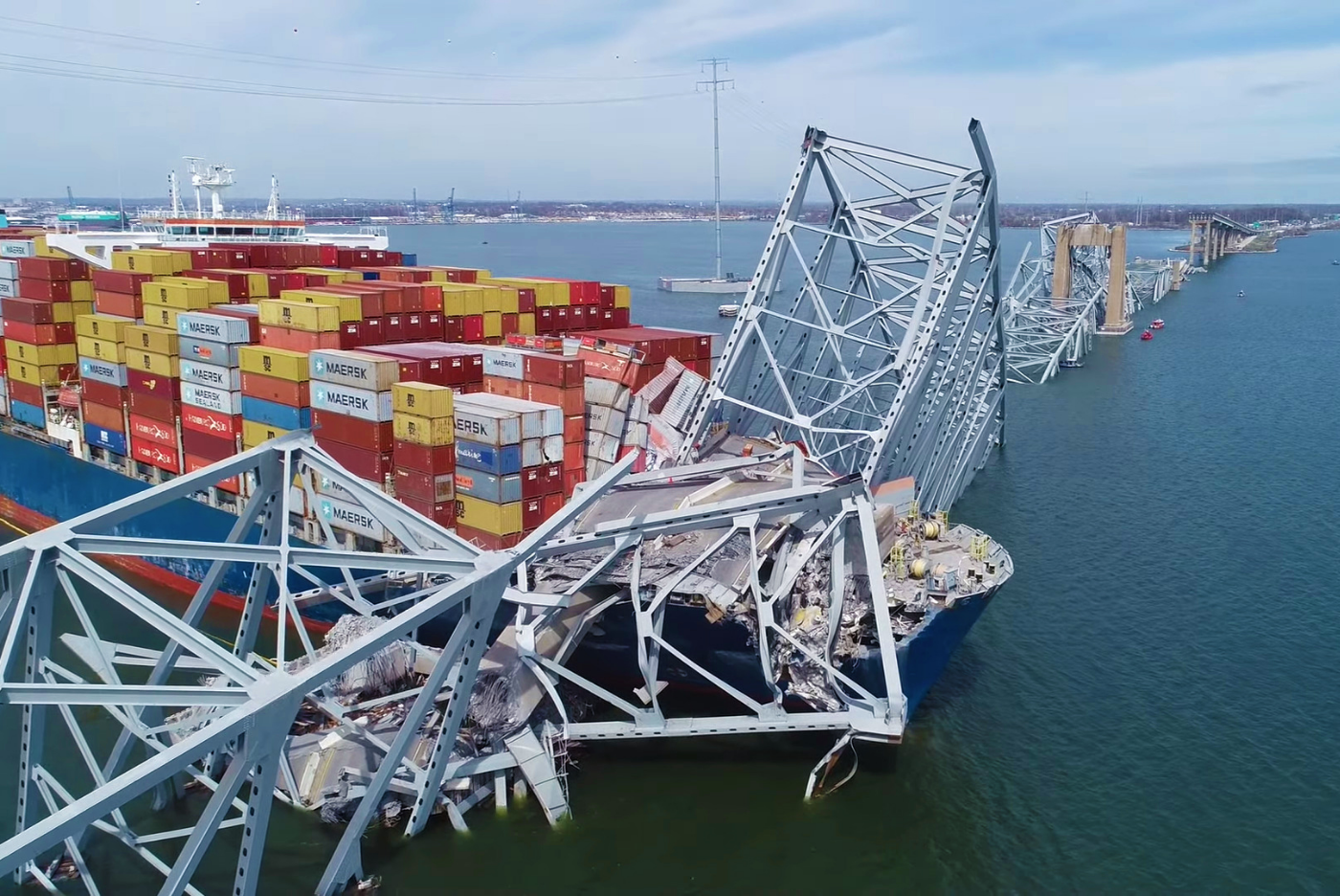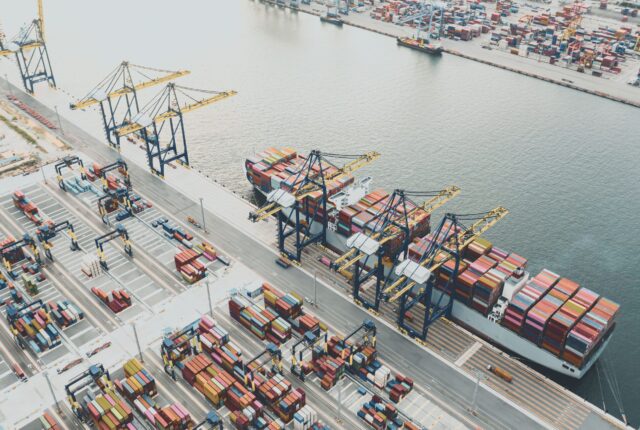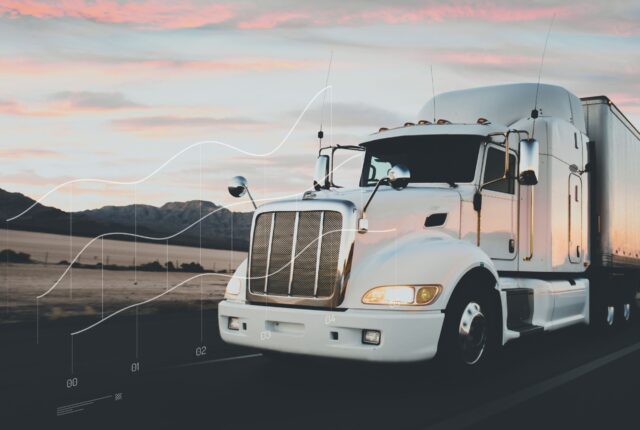
Port of Baltimore crisis: What supply chain managers need to know
Supply Chain Dive asked experts how rerouting by land and sea could work after the Francis Scott Key Bridge collapse.
As shippers face another ocean freight disruption — this time at the Port of Baltimore — companies are yet again making contingency plans to ensure on-time cargo delivery.
Most of the Port of Baltimore’s operations remain suspended after a container ship crashed a bridge near the port, blocking ships from entering the gateway. Halting vessel traffic at the port will have a ripple effect on commodities such as cars, light trucks, farm and construction machinery, forklifts and various bulk goods, according to DAT Freight & Analytics.
“March is the peak import month in Baltimore for farming equipment ahead of planting season in the Midwest,” the freight marketplace platform said in an email.
To better assess the situation, Supply Chain Dive spoke to logistics experts about some of the concerns shippers may have. Here’s four questions and answers that may help shippers decide where and how to reroute their cargo.

A sign shows the Port of Baltimore Seagirt Cargo area outside the Baltimore Port. Kena Betancur via Getty Images
1. How long will it take Port Baltimore to resume full operations?
Vessel access to most of Baltimore’s port terminals is currently blocked by debris in the waterway where the Francis Scott Key Bridge collapsed.
For the port to get back to full operations, the debris must be cleared from the shipping channel, Secretary of Transportation Pete Buttigieg said in a press briefing Wednesday. While details remain unclear, the U.S. Coast Guard is coordinating with the U.S. Army Corps of Engineers to lead the channel clean up and reopen the seaport.
In the meantime, the Port of Baltimore said that vessel traffic in and out of port is suspended until further notice, but trucks are still being processed.

But not all vessels have been stranded since the incident.
Tradepoint Atlantic — which operates a terminal on the other side of the Key Bridge — said it had accepted the Wolfsburg, a regularly scheduled roll-on/roll-off vessel for Volkswagen, on Wednesday. The news marked the first cargo arriving at the Port of Baltimore since the accident on Tuesday.
2. What port of call alternatives are there for ships?
With the Port of Baltimore’s limited operations, shippers may need to call nearby ports in New York, New Jersey, Virginia, and North Carolina, according to an emailed report from project44.
Another option is the Port of Philadelphia.
“MSC and Maersk also use the port in Philadelphia,” Mollie LeBlanc, VP of operations at Uber Freight, said in an interview with Supply Chain Dive.
Some East Coast ports have already said they are ready to receive cargo from vessels diverted from Baltimore. The ports of New York, New Jersey and Virginia have publicly said they are coordinating with shippers and their Maryland counterparts to handle a greater flow of cargo.
“We’re not worried about the impact this will have on capacity, we have ample capacity. And we have honestly a fair amount of experience in handling surge cargo,” Spokesperson Joe Harris from the Port of Virginia told Supply Chain Dive in a Wednesday interview.
Although farther away, Georgia ports could also be an alternative for shippers.
The Georgia Ports Authority issued a statement saying that it expects little impact and for most cargo to be diverted to Northeastern ports but it has that space to accommodate if needed. Georgia Ports Authority operates two roll-on and roll-off facilities: Ocean Terminal in Savannah and Colonel’s Island Terminal in Brunswick.
3. What alternative modes of transport can shippers use?
While ocean carriers can’t circumvent the destroyed bridge, shippers have other options for surface transportation.
Trucks are still being processed at the Port of Baltimore’s several marine terminals. However, to enter the marine terminals without the collapsed bridge, truck drivers can use I-695, I-95, or I-895, DAT Freight & Analytics told Supply Chain Dive in an email. The detour would add 20 to 30 minutes extra, or 12 to 15 miles, for a hypothetical trip from Baltimore to Atlanta. Estimates from other sources suggested some truck routes could see roughly an hour of delays due to detours.
A similar trip would be required to access Sparrows Point, where there is a sizable warehouse market, including companies such as McCormick & Co., The Home Depot, Under Armor, Floor & Decor, Volkswagen Group of America, and BMW, according to DAT.
In addition, some changes for landside rail have already been announced.
CSX, for example, told Supply Chain Dive it has contingency plans in place, which includes dispatching additional trains to the port if needed to ensure coal storage capacity isn’t exceeded. And while international intermodal shipments have stopped at the port, the railroad said in an email domestic intermodal service continues to and from other yards in Baltimore.
On the other hand, a Norfolk Southern spokesperson told Supply Chain Dive the railroad provides customers alternative routing solutions. The railroad touches every other major port on the eastern seaboard.
4. Is airfreight an option?
Airfreight has been a go-to strategy for some shippers to ensure on-time deliveries when ocean shipping goes wrong. But since the Port of Baltimore handles bulk cargo, airfreight may not be as straightforward a solution as it has been in the past.
“At this stage we haven’t had inquiries about converting Baltimore cargo to air while the port is closed,” Matt Castle, VP for global forwarding at C.H. Robinson, said in an email. “Because Baltimore primarily handles fully assembled vehicles and bulk goods like coal, those products by their very nature aren’t practical to ship by air.”
Castle also said that sensitive pharmaceuticals or healthcare products could be an exception.
”But those are often booked by air to begin with and Baltimore is not a particularly air-heavy market,” he said. “If we do see an influx of conversions from ocean to air freight, freighter services to New York would typically serve the Baltimore area and there’s plenty of capacity.”
Inki Sul, visiting assistant professor of operations management at the Tepper School at Carnegie Mellon University, pointed out Amazon and FedEx have distribution centers at nearby industrial parks, as one example.
In general, shippers should expect “to see significant delays and rerouting for inbound shipments,” Sul said in an email. “Logistics and supply chain managers should expect longer lead times and potential price hikes in procurement of raw materials and inventory.”
Larry Avila contributed to this story.
Author
adminRelated posts
Freight Industry Market Update: Trend to Watch
We are pleased to share with you the latest insights.
Trucks, trailers, tonnage: What transport data says about the state of the industry
Economic forces, consumer demand, seasonality, natural disasters [...]
UPS launches new Saturday home delivery service in Canada
The offering is currently available in Toronto’s greater [...]



